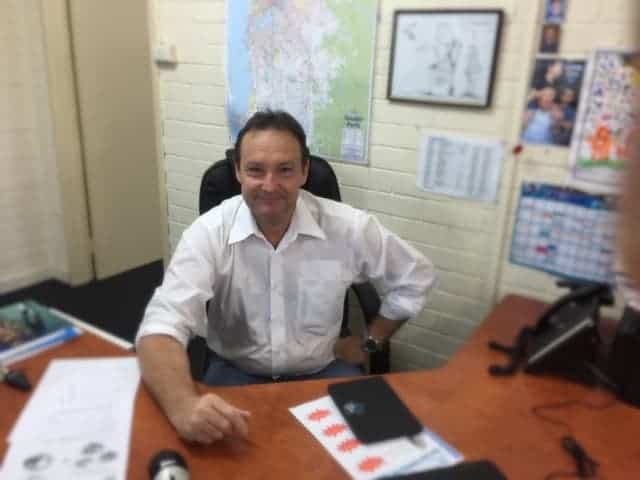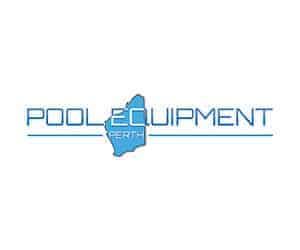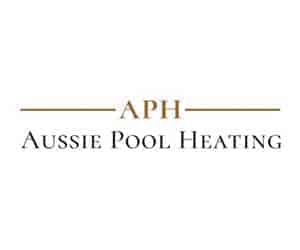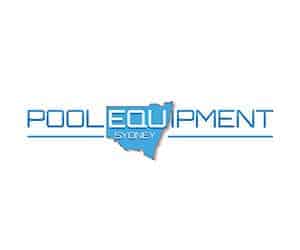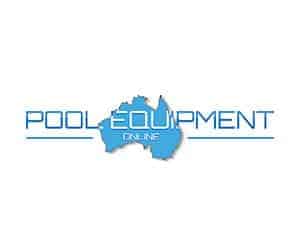Pool Heat Pump Installation Tips
Disclaimer
Always be aware of your responsibilities, ” Pool Safety Fencing Rules & Regulations” in your selected state. It is the pool owners responsibility to ensure compliance.
These are only tips and advice on pool heat pump installation. Always, and l repeat, always follow the manufacturing instructions and guide lines on installation as different manufacturers have different requirements for installing their heaters.
Installing your pool heat pump is a fairly simple task and can be completed either by the handyman pool owner a local Pool Technician or Plumber. If you understand basic plumbing and understand the bypass system installing a heat pump is very easy. The manufacturer’s recommendations should however always be followed in order not to invalidate the warranty or to prevent your heat pump from working properly.
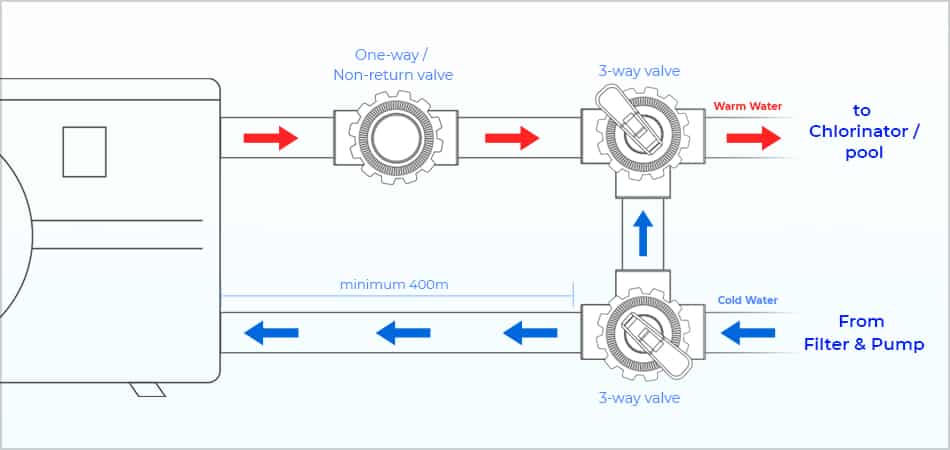
Heat Pump Information
The heat pump pool heater extracts heat from the warm ambient air by using a fan to draw ambient air across the evaporator coil in the heat pump pool heater. Liquid refrigerant within the evaporator coil absorbs this heat and the refrigerant turns to a gas. The warm gas then passes through the compressor. The compressor increases the heat, creating a very hot gas that then passes through the condenser/heat exchanger. The condenser/heat exchanger transfers this refrigerant heat energy to the pool water pumping through the unit. The heated water is then returned to the pool. The hot gas as it flows through the condenser/heat exchanger returns to liquid form and is moved back to the evaporator coil where the whole process begins again.
One of the biggest misconceptions about a heat pump pool heater operation is what happens to the energy used to run the unit. For the most part this energy does not go into the water. The electricity powering the unit operates the compressor and fan, along with the other controls and electronics. The electrical input energy if converted to BTUs only amounts to roughly 14,000 BTU. The bulk of the BTU output comes from the heat energy extracted from the air. Typical Coefficient of Performance (COP) values for heat pump pool heaters are equal to 4.0 – 7.0 and now higher with the introduction of inverters.
Heat pump pool heaters are best utilised to maintain a constant water temperature; they are not intended to provide instant or fast heating like a gas heater. The intended use of a heat pump pool heater is to set it at the desired temperature to maintain. A heat pump pool heater will turn on and off automatically to maintain the desired temperature much like a home air conditioner. The use of a pool cover is highly recommended, and this will help with heat loss overnight. This will ensure the maximum energy savings and reasonable heat up times.
Suitable Location
Choose a location for your heat pump where it can get a good flow of air. Optimum efficiency of the heat pump relies on good air flow, so more is always better. Where possible the heat pump should always be installed outdoors so it can receive a good supply of fresh air to operate and extract the heat from.
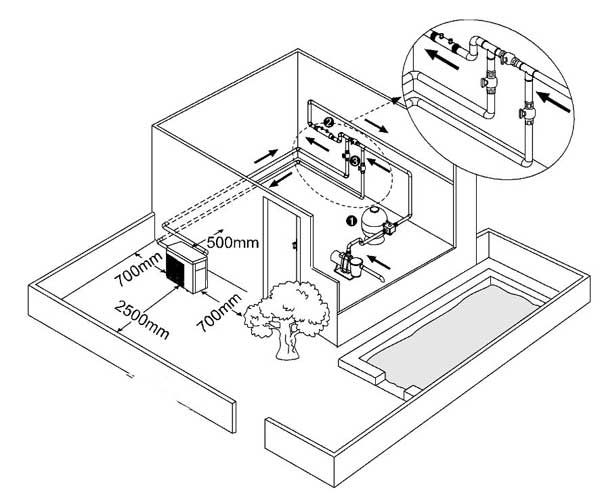
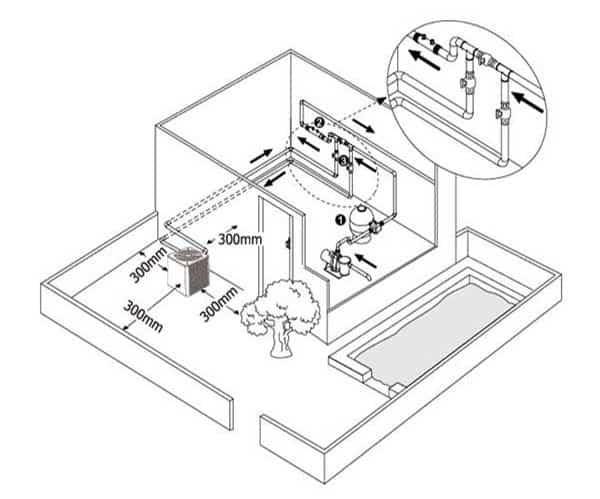
Always ensure that the cold air being expelled by the fan will not hit any obstacles ie a wall or fence or large object located in front of the fan and could then be recirculated back into the heat pump causing heater to not work or work with reduced efficiencies.
Next you will notice there is two shapes of Pool heat pumps the most common is the side mount better known as the horizontal fan and then a top mount better known as the vertical mount fan heat pump.
Horizontal fan heat pumps will draw air in via the back of the unit and partial side of the unit and blow out the cold air from the front of the heat pump. Always remember more space is better but as often the case is space is limited but as a minimum you should allow (500mm) behind the heat pump and at the least 1500mm in front of the unit. Otherwise, the heat pump must be placed on a angle to help direct cold air away. With Horizontal mount heat pumps the expelled cold air should be able to blow away without being obstructed ie hedges, fences sheds walls etc which could cause the air to re-circulate.
Vertical fan heat pumps will draw air in at the sides of the heat pump and blow cooler air upwards out of the top of the unit. You should ensure that there are no obstructions above the heat pump that could cause the expelled air to recirculate back into the unit as this will reduce its efficiency ie over hanging obstacles low hanging trees or roofs etc.
Vertical fan heat pumps should have at least (300mm) clearance around the sides and no obstructions above the unit. Pool heat pumps should wherever possible be installed outdoors to have a good supply of fresh air.
Most heat pumps are installed in what’s called a Bypass system into the existing Filtration line and this then utilises the existing pump saving you money on not buying another pump and the running costs of running two pumps plus the chlorinator or control system can be used as the timer. There are also negatives to this as if you have a chlorinator you will need to run the output lower if running the heat pump for extended times
Try to locate the heat pump close to the pool pump to minimise the friction and heat loss in the pipes. If your pipe run is too long you may have an insufficient water flow rate through the heat pump and may need to upgrade your pool pump or use larger diameter pipes to and from the heat pump to reduce friction and heat loss in the pipes and maintain a good water flow rate. In some areas where the temps go down very low overnight or in Winter the outside temp can affect the exposed piping causing heat loss and making the unit not viable to run and because of this it is recommended to have the heat pump as close to the filtration pump suction as is possible. Most heat pumps state the nominal water flow required on their specification charts. If the water flow through the heat pump is too low the unit will keep cutting out on a low flow switch or sensor.
Always remember the Pool Equipment Manufacturer for the heat pumps puts down instructions and guidelines for a reason and if you reduce airflow or extend the length of pipe or bypass out of these perimeters the manufacturer can and will void the warranty. If you follow the simple but basic guidelines you will have trouble free heating for many years.
Base for Pool Heater
The base for the heat pump should be level and sound. You can use either a concrete base, paving slabs laid on sand or timber decking. The vibration from the heat pump will be minimal and will not disturb the paving slabs. Some manufacturers supply rubber grommets and it is recommended to use them and lock them onto the base. When the heat pump is running condensation and water coming from under the heat pump is normal on humid days or in high humidity areas and some manufacturers supply a drain plug for a hose to run off or alternatively ensure the runoff does not affect your set up. Some customers mistakenly think that the heat pump has a leak when in fact the water coming from the heat pump is normal condensation so don’t be too concerned and if you are please call us.
Pool heaters can be installed on brackets attached to the wall. Please ensure strong sturdy brackets regarding weights by the manufacturers are adhered too. A tip is don’t place it onto a wall that sits opposite your lounge TV room as depending on thickness of the wall etc it may cause noise to be heard in this room. In my experience it is best to not place the unit higher than one meter, but I’ve seen units placed on roofs l would never recommend this. In tighter spaces l find by raising the unit 500mm-1000mm allows air flow under the unit.

Water Flow Rate
All heat pumps will show the required water flow rate on their specifications table. If the water flow rate is too low, then the water in the heat pump will overheat or go out on low flow sensor and the heat pump will switch off.
Check the water flow rate from your pool pump and through your filter to ensure that it is high enough for your pool heat pump. As your sand filter or cartridge filter starts to clog up and need a clean this then affects the heat pump as the flow starts to become reduced. So always ensure your filter is clean and this applies to your pump basket and pool skimmer basket as all these when blocked start to affect flow to the heater.
Water temp required for swimming pool comfort is usually 28 to 32 degrees.
We sell water flow meters that will show you the flow rate through your pipes.
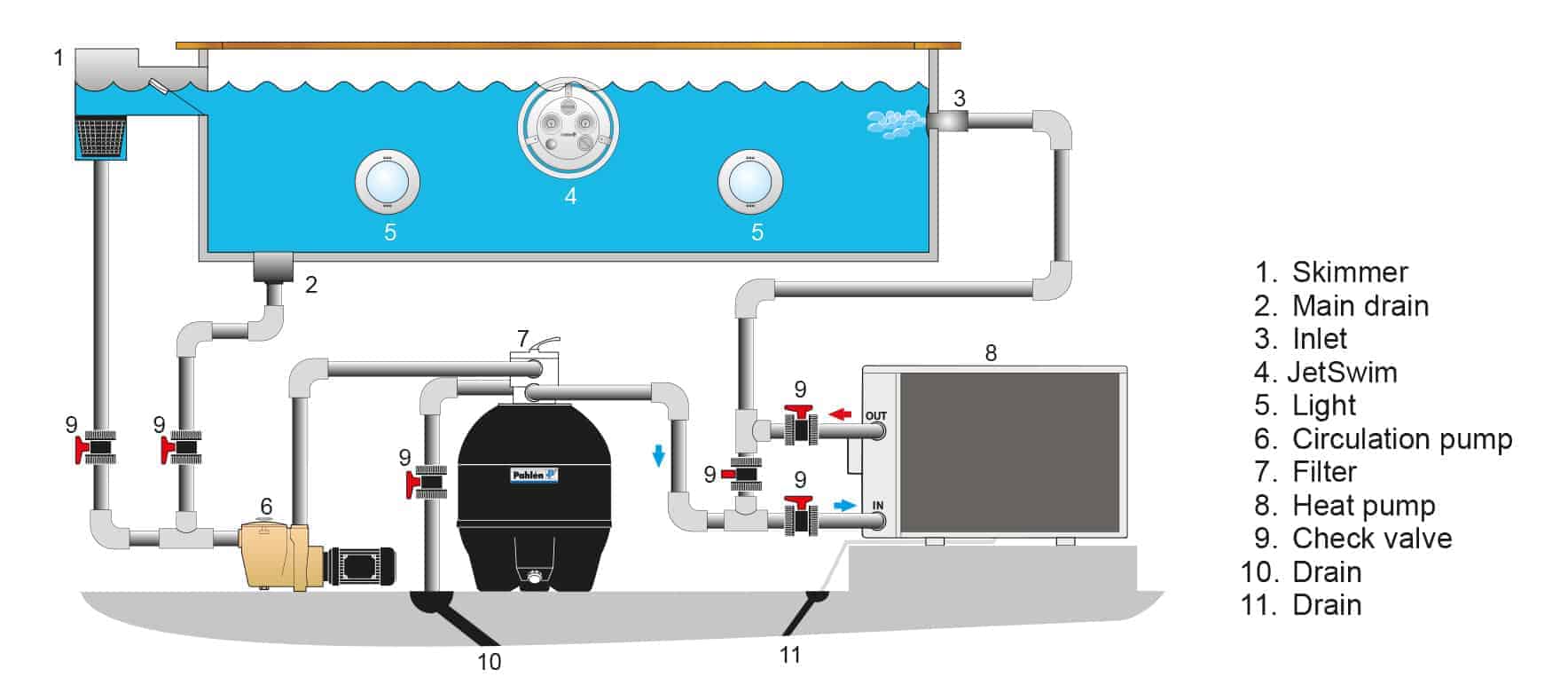
Heat Pumps for Hot Tubs & Swim Spas
Some manufacturer heat pumps will do temps of up to +40 degrees. This is what you really want for a Spa whereas a pool 28-32 degrees. So, heat pumps can also be installed on hot tubs and swim spas.
Using a heat pump will normally greatly reduce running costs compared to an electric inbuilt spa heater and the use of heat pump on spas and hot tubs is becoming increasingly popular.
The desired water temperature can be set to a maximum of +40c
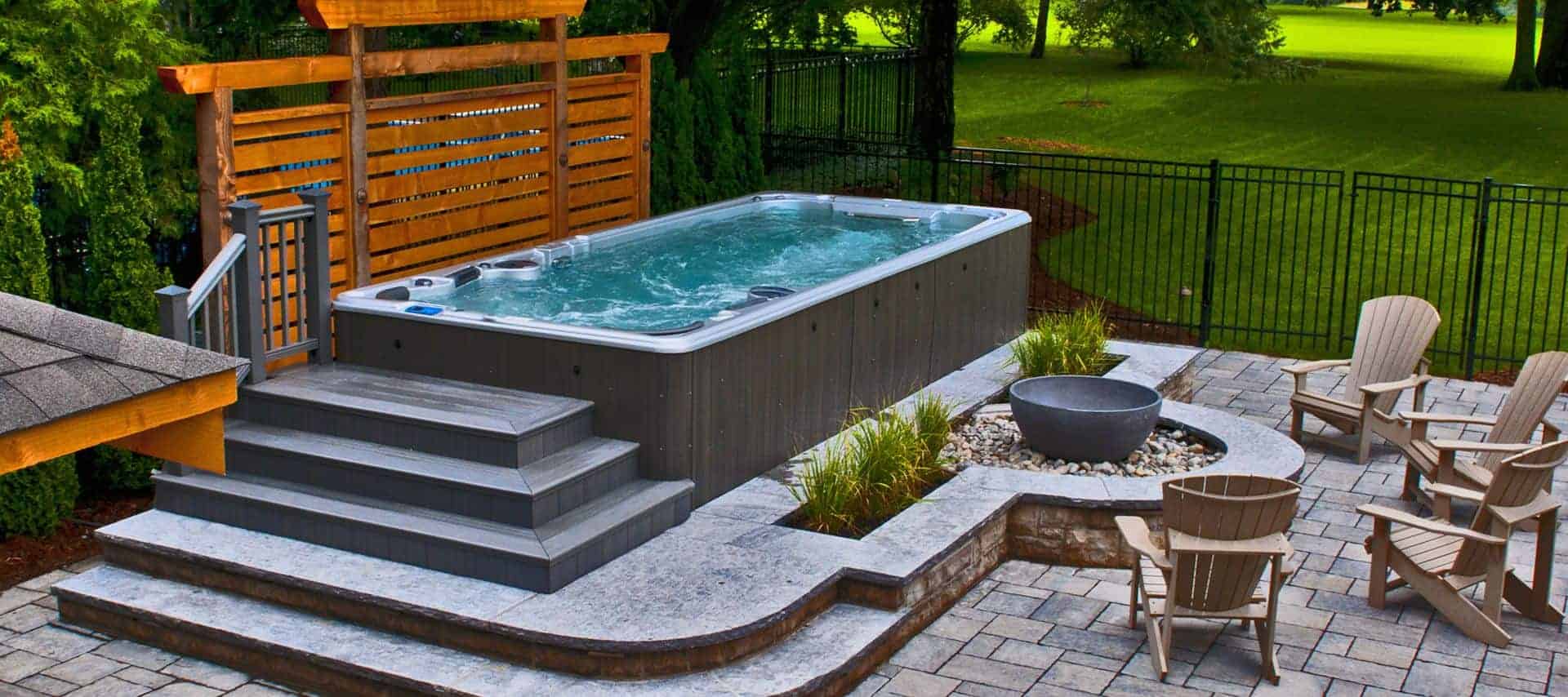
Plumbing
It is easy to add a heat pump to an existing pool filtration system. First check to see what size of pipes you have. In Australia usually you will have 50mm and 40mm plumbing. It is the return to the pool you will work on so really it is either 50mm or 40mm. Once you know the existing pipe size that you have you will know what size connectors and elbows you will need.
If you have an existing pool heater i.e., being a gas heater then if it still works great, we would then recommend that you leave it in place and put the heat pump in line with the existing heater as this will allow you to run both the heat pump and gas heater if required for a rapid pool heat up. The old heater can also help to supplement the heat from your heat pump in very cold weather to help extend the swimming season.
Where possible the water should run through the heat pump first and then the existing heater so that the heat pump does most of the heating work. The thermostat on the existing heater can be set lower than the heat pump so that the existing heater will only operate if required.
On the return to pool pipeline, we recommend that you install a “bypass” set up with your heat pump. A bypass can also allow the water flow rate to be adjusted to achieve the optimum performance for the heat pump. We are happy to advise on how to adjust the flow rate accordingly depending on the make and model of heat pump used. The bypass consists of two x three way valves and a non-return valve .
Generally, you should aim for a difference between water in and water out temperatures of around 1-3 degrees. When the heat pump is not being used, we recommend shutting valves to the inlet and outlet of the heater. The bypass setup also allows you to adjust the water flow rate passing though the heat pump. By slightly opening the bypass valve you can reduce the water flow through the heat pump. The pipes from and to the heat pump can be insulated to help reduce heat loss.
The heat pump is normally installed as the last item in the water flow before the water returns to the pool, i.e., after the filter. The only exception to this is if you have a chlorination unit in which case this should be the last item before the water returns to the pool so that concentrated chlorine does not go through the heat pump as this could cause premature corrosion to the heat exchanger.
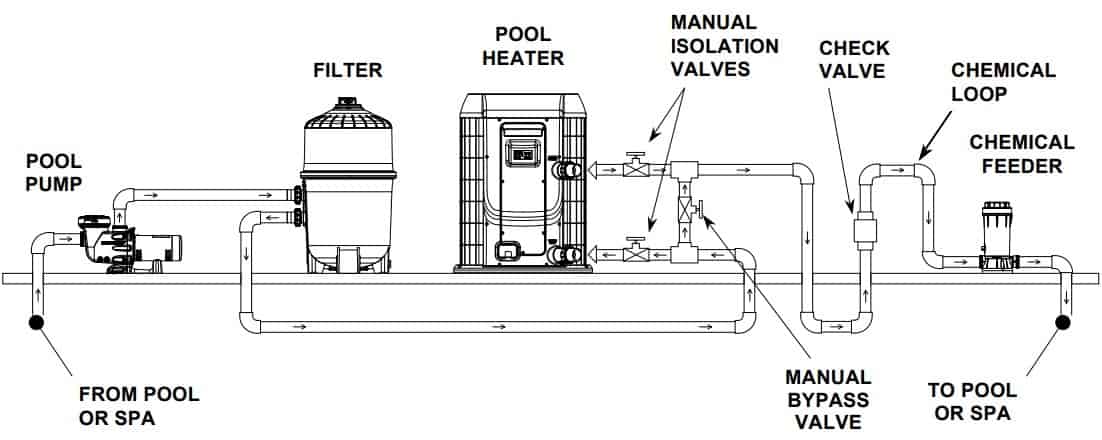
Wrong Expectations
- Heater not working properly because it is snowing outdoors and you want to run the pool heater .
- High gusting winds, very, very cold days and you want to run the pool heater .
- Pouring rain and hail everyday and you want to run the pool heater.
- Your pool is too big but you only want a small heater – best you do not get one.
- You only have a narrow passage between house and wall and low air circulation – don’t put one here.
- Don’t understand why you have lost heat overnight and don’t have a pool blanket
- When the heater runs, please understand it does make a low noise like air conditioners please refer manufacturers dBs So if you don’t like this noise level DONT get a pool heater.
- Before Summer in colder months heater may need to run for 1-3 days 24 hrs to get temp up to desired temp 28-30 degrees if you don’t want this don’t run it and wait closer to Summer to start up.
- Understand the weather COLD TEMPS – RAIN – STRONG WINDS can change conditions to heating your pool .
- Position of heater is your responsibility as we do not know what is behind that wall i.e., bedroom etc.
What Makes Us Happy?
- A happy client that understands and uses the heater in the correct environment and conditions.
- Makes their neighbours jealous so they call us after talking to our happy client.
- The kids happy playing in the pool..
- Healthy swimming.
- The chill from the pool has gone.
- Friends and Family around the pool having fun.
- Referral business.

Call or Email Shane for Help and Advice
Shane is the proud owner of Aussie Pool Heating and has been providing pool equipment and heating advice for over 20 years. Using only trusted brands and models of pool equipment, Shane remains focused on providing quality service and trusted advice to his customers.
With extensive knowledge and experience, Shane is at many times on the phone or on site helping with enquiries. If you have any pool issues or enquiries, call Shane on 0431 256 385 or email [email protected]
